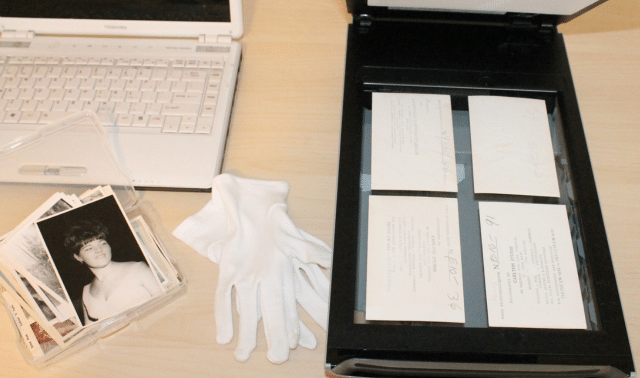Sign up for the Family Tree Newsletter! Plus, you’ll receive our 10 Essential Genealogy Research Forms PDF as a special thank you.
Get Your Free Genealogy Forms
"*" indicates required fields

You can skip the gluesticks and red pencils, but you still need school supplies to make the grade in your genealogy research. Here are five genealogy supplies and tools you should stock up on.
1. Forms and Worksheets
Just like school, genealogy requires you to complete worksheets. But these worksheets are more fun than multiplication tables or vocabulary lists!
Genealogy forms can help you record and organize key names, dates and events that you discover in your research. They also make it easier to save and share your family tree data with friends and relatives. Family Tree has several free worksheets available for download, or you can check out our Essential Forms Library Download (which has 115 typeable forms you can download, fill in and print).
2. Research Log
If you feel like you’re doing the same research over and over again, you might benefit from creating a research log. Your research log is simply a place to record what you researched and when, plus what you found.
Think of a log like your ruler and protractor—setting the boundaries for your work and helping you keep accurate data about your research. A log can save you valuable time and make it easy to pick up your research after a long hiatus.
To make your log searchable, you could record it in a word processing software or an app like OneNote or Evernote. Simply make a log that works for your research. We have a template that can get you started.
3. Photo and Document Scanner
We’ve all got stacks of photos, records and other documents piled up in boxes around the house. With more and more genealogy being done online, it’s time to digitize those precious heirlooms and sources. But effective, flat-bed scanners are pricey.
Instead, consider using an app like Google PhotoScan to take images of your documents and photos with your smartphone. Then you can use software such as Vivid-Pix to edit or touch up your images. Our Photo Rescue eBook has more great tips and strategies for digitizing and archiving your photos.
4. Organization System
While not really a physical object, an organization scheme is key to keeping your genealogy in order. Deciding how you want to name your files and folders (either physical or digital) is a good place to start. As with research logs, your organization scheme will vary depending on your research goals and the sorts of files you already have. But having an organization system in place will keep you from losing any hard-earned data and make it easy to find later on.
Don’t be discouraged if it takes you a while to add an organization strategy to your genealogy backpack. Think of this as a semester-long project, rather than something you can cram for in one night.
Get further inspiration from our book Genealogist’s Guide to Getting Organized. You’ll find tips on how to take small steps towards the right organization system. By breaking organization goals into small, achievable tasks, you can better implement practical strategies into your routine.
5. DNA Test
Head back to science class by getting your DNA tested. We’ve talked extensively about the benefits of DNA testing, but it warrants repeating: DNA can solve genealogy problems like no other tool, especially if you have an adoption in your family tree. You have several options to choose from, and we’ve compared the five major testing companies to help you pick the one best for you and your research. You can even buy a test for a friend or relative if you want to take your genetic genealogy to the next level.
Related Reads
Last updated: July 2024







